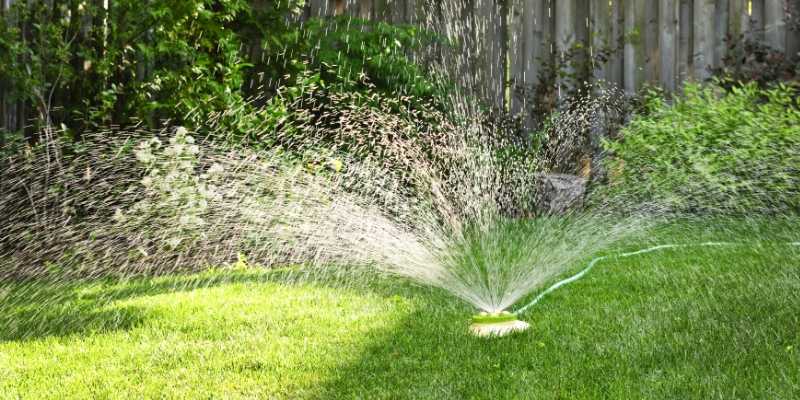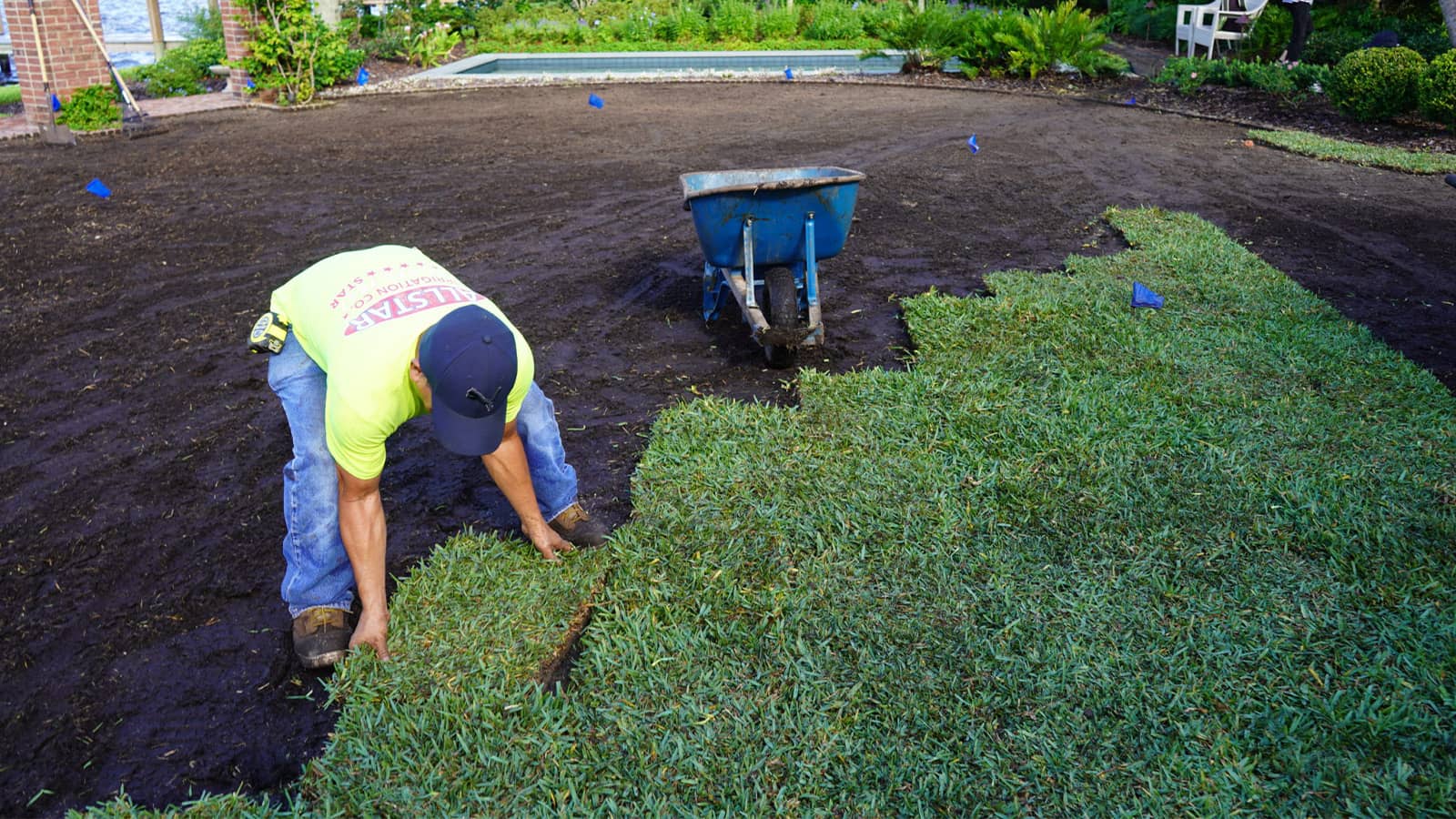To water st augustine grass, provide 1 to 1.5 inches of water per week, ideally in two or three sessions, avoiding overwatering which can lead to disease and shallow root growth. Proper watering promotes deep root development, allowing the grass to withstand drought conditions and maintain its lush appearance.
Having a well-maintained lawn enhances the aesthetic appeal of any outdoor space. St augustine grass, known for its dense growth and dark green color, is a popular choice among homeowners. To keep it looking healthy and vibrant, proper watering is crucial.
This article will provide useful tips and guidelines on how to water st augustine grass effectively. By following these guidelines, you can ensure that your lawn stays green and beautiful throughout the year.

Credit: houstonturfgrass.com
Understanding The Watering Needs Of St Augustine Grass
St augustine grass requires proper watering to maintain its health and lush appearance. Factors such as climate, soil type, and sunlight exposure play a crucial role in determining the water needs of this grass. It is important to establish an optimal watering schedule to avoid under or over-watering.
Pay attention to the grass blades and soil moisture levels to determine when it’s time to water. Remember to water deeply and infrequently, allowing the water to penetrate the soil and reach the roots. This encourages deep root growth and increases the grass’s drought tolerance.
Avoid shallow watering as it promotes shallow root growth and makes the grass more susceptible to stress and disease. By understanding these factors and following appropriate watering practices, you can ensure the health and vitality of your st augustine grass.
Signs Of Overwatering And Underwatering St Augustine Grass
Watering st augustine grass requires careful observation to avoid overwatering or underwatering. Signs of overwatering include yellowing or browning of the grass, excessive thatch buildup, and the presence of fungus or mold. If the grass feels mushy or spongy to the touch, it indicates excessive watering.
On the other hand, signs of underwatering include wilting or curling leaves, a dull grayish appearance, and slow growth. Dry and brittle grass blades are also indicators of insufficient watering. To prevent overwatering, check the soil moisture before watering, ensuring it is not already saturated.
Water deeply but infrequently to encourage the grass to develop deep root systems. Conversely, increase watering frequency during hot and dry periods to prevent underwatering. By closely monitoring your st augustine grass and recognizing these signs, you can ensure proper hydration and maintain a healthy lawn.
How to Water St Augustine Grass: Step by Step Guide
Practices For Watering St Augustine Grass
Watering st augustine grass requires following proper techniques to ensure its health and growth. To effectively conserve water while watering this type of grass, keep these guidelines in mind. First, avoid overusing water by watering only when necessary. Additionally, provide deep watering rather than frequent shallow watering to encourage strong root development.
Moreover, water early in the morning to minimize evaporation and fungal growth. In addition, use a sprinkler or irrigation system with low water pressure to prevent runoff and ensure even distribution. Furthermore, consider installing a rain sensor to pause irrigation when it’s not needed.
Lastly, regularly monitor the moisture levels of the soil using a moisture meter to determine when to water. By following these practices, you can water st augustine grass effectively while conserving water.
Implementing Watering Strategies For Different Seasons
Implementing watering strategies for different seasons is crucial for maintaining a healthy st augustine grass. During the spring season, it is recommended to water the grass deeply but infrequently, allowing the soil to dry out between waterings. This promotes deep root growth.
As summer arrives, adjusting watering practices becomes essential. The grass needs more frequent watering to withstand the heat and prevent drought stress. However, it is still important to avoid overwatering, as it can lead to shallow roots and disease susceptibility.
When fall approaches, gradually reduce the frequency of watering to prepare the grass for dormancy. This helps the grass become more resilient to cold temperatures. By following these watering guidelines for each season, you can ensure that your st augustine grass thrives throughout the year.
Dealing With Watering Challenges For St Augustine Grass
Properly watering st augustine grass can be a challenge, especially when faced with excessive rainfall or drought conditions. To combat excessive rainfall, it’s essential to implement effective strategies. One approach is to create a drainage system that redirects excess water away from the grass.
Another method is to adjust the irrigation schedule accordingly, allowing time for natural rainfall to be absorbed. In situations where drought conditions or water restrictions are prevalent, it’s important to prioritize watering by providing deep, infrequent soakings rather than frequent light sprinklings.
This encourages the grass to develop deep, strong roots. Additionally, applying mulch around the base of the grass can help retain moisture and reduce evaporation. By following these strategies, you can effectively manage the watering challenges faced by st augustine grass.
Additional Considerations For Maintaining Healthy St Augustine Grass
Understanding the importance of soil drainage is crucial for maintaining healthy st augustine grass. Proper soil drainage allows water to penetrate the soil effectively, preventing waterlogging and root rot. It also ensures that the grass receives essential nutrients adequately. Fertilization plays a significant role in maintaining the optimal moisture balance of st augustine grass.
Choosing a fertilizer specifically designed for this grass variety will provide the necessary nutrients and promote healthy growth. It’s important to follow the recommended fertilization schedule, applying the appropriate amount to prevent over or under-fertilization. Regularly monitoring the moisture levels of the soil and adjusting watering accordingly is crucial for sustaining healthy st augustine grass.
By maintaining proper soil drainage and fertilizing adequately, you can ensure your st augustine grass remains lush and vibrant throughout the year.
Frequently Asked Questions For How To Water St Augustine Grass
What Is The Best Way To Water St. Augustine Grass?
Watering st. augustine grass is best done in the early morning, using deep and infrequent watering. This allows the roots to develop deeply, making the grass more drought-resistant. Water the grass 1 to 1. 5 inches per week during the growing season, applying enough water to reach the root zone.
Avoid shallow watering, as it encourages shallow root growth. Use a rain gauge or empty tuna can to measure water depth and adjust irrigation accordingly. Over-watering can lead to disease and shallow root growth, so ensure the soil has adequate time to dry out between watering.
Consider local rainfall and weather conditions when determining how often to water. Use sprinklers or an irrigation system for even distribution. Regular watering and maintenance will help maintain a healthy st. augustine grass lawn.
How Often Should You Water Saint Augustine Grass?
Water saint augustine grass two times a week during periods of drought or when the grass starts to show signs of stress such as wilting or turning brown. Water deeply to encourage deep root growth and drought tolerance. Apply about ¾ to 1 inch of water each time, ensuring the soil is thoroughly moistened.
To determine the irrigation duration, place a container in the lawn and stop watering once it reaches the desired depth. Early morning watering is recommended to minimize evaporation. Adjust the irrigation schedule based on weather conditions and moisture needs, but avoid overwatering as it can lead to shallow root growth and fungal diseases.
Regularly monitor the grass to ensure it receives adequate hydration without becoming excessively saturated.
Can You Overwater St. Augustine Grass?
Overwatering can be harmful to st. augustine grass. Excessive water may lead to shallow root growth and make the grass more susceptible to diseases and pests. It is best to water the grass deeply but infrequently, allowing the soil to dry out between watering sessions.
This encourages deeper root growth and ensures the grass stays healthy and resilient. Remember to adjust your watering schedule based on factors such as rainfall, temperature, and soil type. Monitoring the moisture level in the soil can help determine when it’s time to water.
Avoid overwatering to prevent damage and promote the overall health of your st. augustine grass.
What Is The Best Time To Water St. Augustine Grass?
The best time to water st. augustine grass is early in the morning, preferably between 6 am to 10 am. Watering during this time allows the grass to absorb the moisture before the sun gets too hot, reducing the risk of evaporation.
It also gives the grass time to dry before evening, which helps prevent disease. Watering in the morning also provides the grass with the necessary moisture to survive the day’s heat and allows the roots to penetrate deeper into the soil.
Avoid watering at night as it can lead to prolonged moisture on the grass, increasing the likelihood of fungal diseases. Watering during the middle of the day is also not recommended as the water can quickly evaporate in the hot sun.
The best practice is to water st. augustine grass deeply but infrequently, ensuring the water reaches the roots.
Conclusion
Properly watering st augustine grass is essential for maintaining a healthy and vibrant lawn. By following the tips and techniques outlined in this blog post, you can ensure that your st augustine grass thrives year-round. Remember to establish a regular watering schedule and adjust it according to the weather conditions and the grass’s needs.
Use a deep and infrequent watering method to promote deep root growth and drought tolerance. By watering in the early morning or late afternoon, you can avoid evaporation and fungal diseases. Additionally, be mindful of water conservation and consider using smart irrigation systems to optimize water usage.
Finally, regularly monitor your lawn and make adjustments as necessary to ensure optimal water absorption and distribution. With these guidelines in mind, you will be well on your way to having a lush and healthy st augustine grass lawn.

